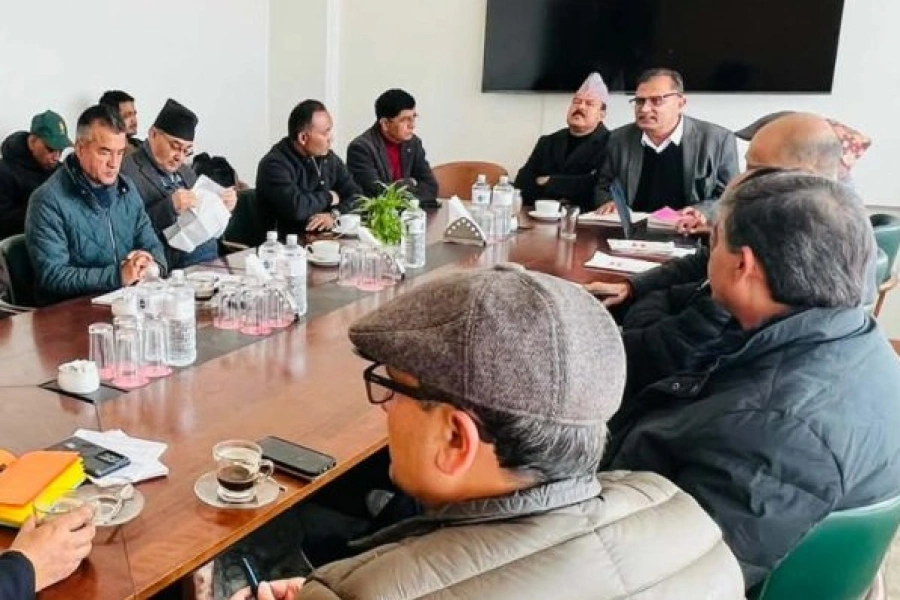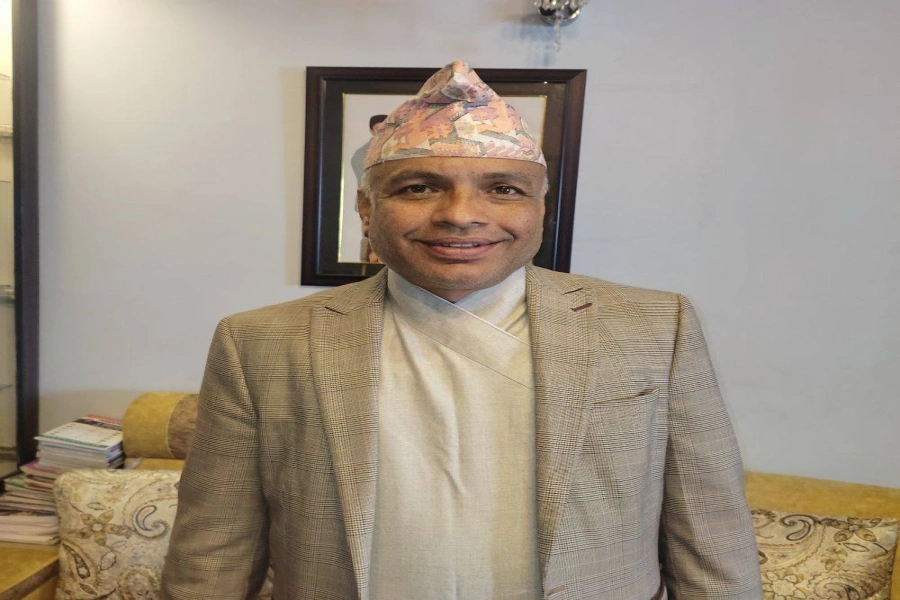Since both India and Nepal have strong governments, they can resolve Kalapani issue if they earnestly sit down for talks
The Indo-Nepal border dispute at Limpiyadhura, Lipulekh and Kalapani is getting intense. Nepali Congress President Sher Bahadur Deuba has accused Prime Minister KP Sharma Oli of giving consent to include these areas in political map of India. It is a serious allegation to the government head at a time when the government has sent a ‘note verbale’ for immediate round table meeting to solve the dispute.
People were happy when, during the all-party meeting, political parties had agreed to raise the issue against the Indian establishment for safeguarding Nepal’s territory.
Most intellectuals have advised the government to solve the dispute through negotiations. But this is not easy. The government has tasked the secretary of the Ministry of Foreign Affairs (MOFA) to deal with the issue which has not been solved since 1962.
The issue was raised during Indian Prime Minister Narendra Modi’s first visit to Nepal in 2014 and it had been decided that it would be resolved through secretaries of respective countries. But the problems persist. So people are not convinced that Nepal will be able to sort this dispute out amicably.
Jugmani Chaudhary: A land rights activist making strides in Wes...

Current border tension is only one of the disputes between Nepal and India. Nepal has not accepted several contents and modalities of India Nepal Friendship Treaty of 1950. Both countries agreed to set up Eminent Persons Group (EPG) to review the treaty. Now EPGs of respective countries have submitted the reports to their respective governments but it has not been made public.
It is learnt that regulating the border is the issue India is reluctant to accept, though there is no harm in doing so.
On Kalapani, some intellectuals have even suggested to knock the door of the International Court of Justice (ICJ) because Sughauli Treaty of 1816 has clearly mentioned Mahakali River as its western boundary originating from Limpiyadhura. ICJ has two roles to ensure the international justice: resolve legal disputes between the states and advise the United Nations and its legislative bodies to do so. But practically, it will not be so easy to ensure the rights of small countries. Mostly such disputes are petitioned by the rights-based small countries against the interest -based strong one. As the working group report of the Law School of Chicago University in 2004 indicates, judges often fail to apply law impartially and tend to favor interest of their home country.
Besides, ICJ itself is becoming the victim of the conflicting interests of the states who can use and control it. As such, it has been widely criticized for its failure to become neutral.
On the other hand, there are many instances where the border disputes have been settled through bilateral negotiations. Since both India and Nepal have at the moment strong governments, they can resolve Kalapani issue if they earnestly sit down for talks.
The most recent example of settlement of border dispute through bilateral negotiations concerns India and Bangladesh. There were 111 Indian enclaves and 51 Bangladeshi enclaves. They were exchanged pursuant to Land Budgetary Agreement 1974 in June, 2015. Prime Minister Narendra Modi demonstrated his skill in resolving the prolonged border disputes between the two countries.
If Nepal can show with strong evidence that Limpiyadhura, Lipulekh and Kalapani are Nepali territories, India must be convinced.
Limpiyadhura, Lipulekh and Kalapani may be the lands of strategic interests for India. In that case, one possible option can be to exchange land between the two countries. But India should provide Nepal access to Bay of Bengal. As there is massive public resentment to Indian policy at the moment, majority of people might strongly oppose any such leverage to compensate Nepali territory with India. Some might even demand that all India-Nepal cooperation projects should be suspended until India pays compensation for unequal distribution of water resources. More people are advocating for this, since India included Nepali territories in its political map on November 2.
The major drawback to resolving this issue bilaterally, however, is internal politics. Early last month, all political parties unanimously decided to stand untied to take initiatives to make India return the land east of Mahakali River to Nepal. Then main opposition Nepali Congress president unnecessarily blamed Prime Minister K P Sharma of giving consent to India to subsume Nepali land into Indian map. If such trend continues, how can we promote our national interest and return our captured territory?
If we fail to safeguard our territory and allow the neighbors to use it, they will start claiming our land as theirs. Limpiyadhura, Lipulekh and Kalapani are the examples of failure of Nepali state to safeguard its territories. Yet, we have not even discussed deploying border security forces. We need to fence the border but we do not do so citing budgetary constraint. With such mindset, how can we strengthen our nationalism and preserve our country’s interests?
Umesh K Bhattarai
Scholar of security and strategic studies
Email: ukbhattarai@gmail.com




































